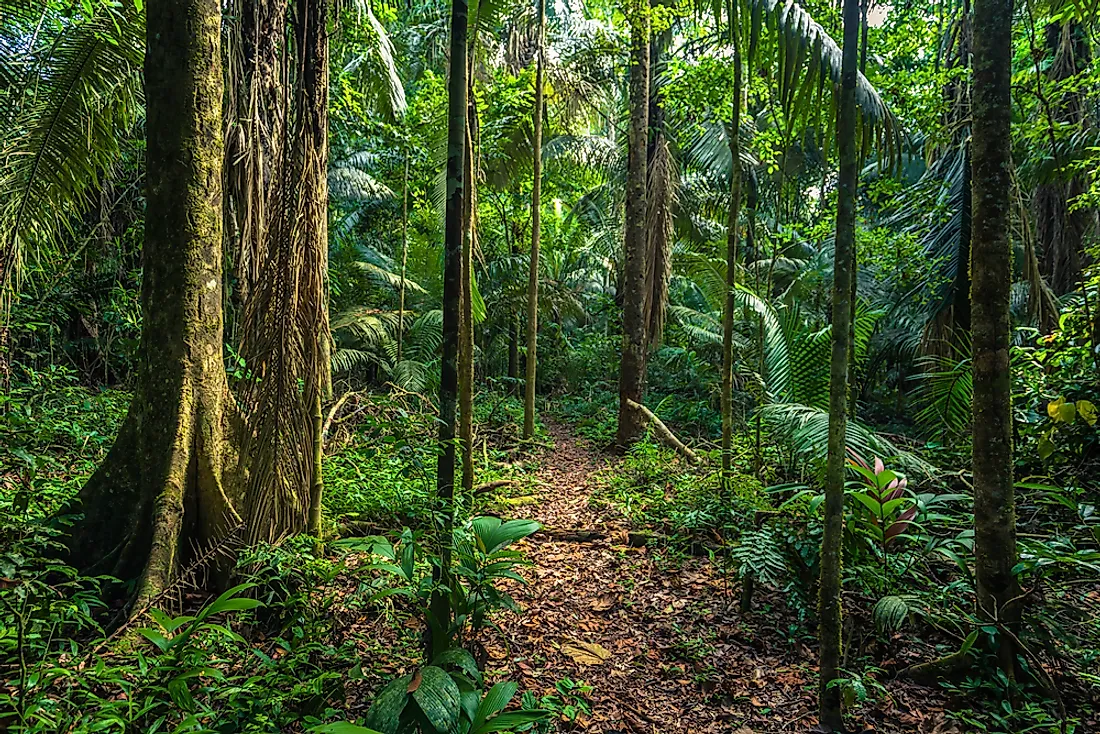Do The Minhocão Really Exist?

The Minhocao is a mythical creature believed to inhabit the jungles of South America. Despite being the subject of many legends in South America, the Minhocao remains a myth as no recorded sighting of the creature has been made. The worm is said to be huge, estimated to be between 75 and 150 feet in length. The Minhocao is also stated to be terrifying, having a large head that features large tentacle-like protrusions and a large mouth with a snout resembling that of a pig. Large terrestrial animals such as cattle are said to be the primary diet of the Minhocao, with the worm capturing its prey by suddenly attacking from beneath the surface.
Habitat
The worm is said to move through burrowing beneath the earth’s surface leaving immense trenches in its wake. Houses and bridges on the trenches left behind by the Minhocao have been reported to collapse, while rivers have been said to divert their natural course as a result of the worm’s burrowing. Local rumors state that these burrows sometimes flood during the rainy season, forming underground rivers. With the trenches forming mainly during the rainy season, it is believed that the Minhocao is usually most active during the wet season. Apart from its subterranean habitat, the Minhocao is also believed to lead an aquatic life, residing in large water bodies.
Explanation
A common explanation attempting to unravel the monster claims that the sightings of the Minhocao are those of a type of large caecilian. Caecilians are strange amphibians whose appearance closely resembles that of the mythical worm, with elongated bodies and tiny sensory organs on their heads. Like the Minhocao, caecilians lead subterranean lives and can also be found in aquatic environments. While it is easy to conclude then that the Minhocao is, in fact, a large caecilian, as the amphibian is also found in large populations in South American forests where sightings of the Minhocao have been made, the two differ remarkably in size. The amphibians do not even close the size of the mythical worm, as they only reach a maximum length of few inches, quite tiny compared to the over 100 feet of the Minhocao. Another controversial theory has it that the Minhocao could be a descendant of the extinct Titanoboa. Titanoboa was a prehistoric serpent that lived in South America about 60 million years ago. The ancient snake was about 50 feet in length and 2,500 pounds in weight, making it the largest snake ever to live. The theory is, however, dismissed by most experts as the Titanoboa lived during the earth’s Paleocene era and has been extinct for millions of years, with its extinction even predating the arrival of humans in South America.
Legacy
The city of Sao Paulo, Brazil is home to a 2.2-mile long elevated highway known as the “Minhocao.” The highway, which was opened in 1969, was among the first elevated highways to be constructed in Brazil and was at the time, the country’s largest construction project ever. Originally known as the “Elevado Presidente Costa e Silva” in honor of a prominent leader in Brazil’s military dictatorship, the highway was renamed in 2016. The highway gets its “Minhocao” name after the mythical subterranean worm, as its elevation above the city resembles the gigantic worm rising from the earth.











